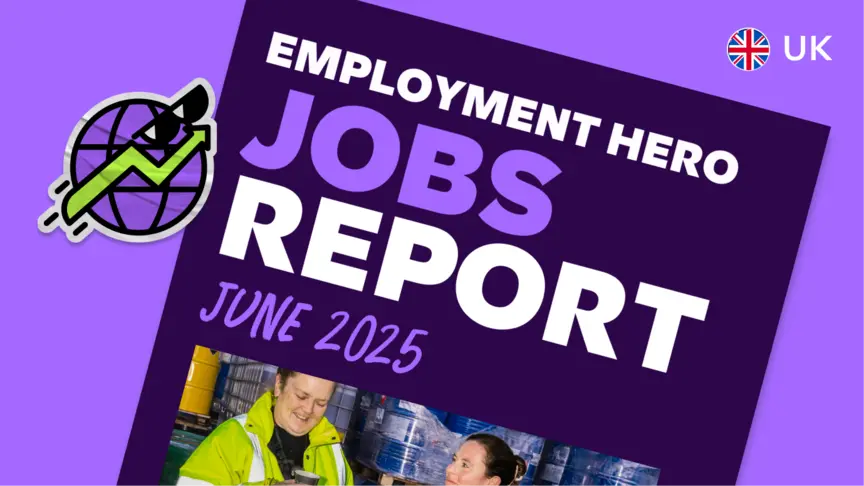Diversity & Inclusion Strategy – A Guide
Published
Diversity & Inclusion Strategy – A Guide
Fostering equality, diversity and inclusion in the workplace helps to create a professional and supportive environment in which all employees can thrive.
But putting together a diversity and inclusion (D&I) strategy can be easier said than done! To learn more about diversity and inclusion at work, keep reading, or download our guide!
What’s in this diversity and inclusion at work strategy guide?
How can you ensure your (D&I) strategy is having real business impact?
Together with industry experts, we’ve created a complete guide to help.
In this guide, you’ll learn about:
- The Basic Principles of Diversity and Inclusion at work
- Understanding different needs and experiences
- How to build a diversity and inclusion strategy toolkit
Looking for a teaser? We’ve got an excerpt of the guide for you below.
The basic principles of equality diversity and inclusion in the workplace
Before we tackle strategies, let’s narrow a complex topic down to some basic principles. What are we trying to achieve when we’re putting together a D&I strategy?
Removing unfair barriers
Everyone should be able to access fair employment, and feel safe and content when they are in their workplace. Unfortunately, for many groups of people there are a lot of barriers that stop that from happening.
To think about what barriers exist, we can look to hiring, employee experience and employee growth. Consider these questions:
- Do all groups feel like they are welcome to apply for a position at the company?
- Are they considered fairly and in an equitable way when they are undergoing the recruitment process?
- Do employees feel encouraged to share their ideas at work?
- Do they feel rewarded for their achievements and free to be their authentic selves with their colleagues?
- Do they feel encouraged to grow and be given promotion opportunities?
- Are they supported in development and urged to pursue leadership roles?
What are the drivers of these barriers?
It can be unconscious bias – where leaders or managers may be making decisions or comments that are discriminatory without intending to. But it could also be conscious bias. Openly discriminatory discussion and actions can still take place even within companies that consider themselves to be progressive, and this needs to be called out and challenged.
Understanding different needs and experiences
In the Journal of Business Ethics essay ‘Building an Inclusive Diversity Culture: Principles, Practice and Processes’, academics Nicola Pless and Thomas Maak explore the essential need for colleagues to listen and understand each others’ experiences. They suggest that this can be made easier when a company has a culture of active listening, consideration and trust. When you have a better understanding of your staff’s perspectives, it will be easier to act with equity in mind and create a fair and welcoming environment.
Treating everyone with respect
Everyone deserves to be treated with respect and dignity, which is what diversity and inclusion at work is all about. Every person in a company is an individual with different skill sets, ideas and feelings. When employees feel engaged and respected by the company and other team members, they’re more likely to have a greater sense of wellbeing and they will want to contribute to the company’s success. When employees feel like they are not being shown respect, their sense of wellbeing can suffer, they can disengage from the workplace and even consider resigning.
An atmosphere of inclusion
When you are in an environment that values diversity and inclusion in the workplace, you don’t only implement policies and formal goals – you have a culture of inclusivity. In a culture like this, everyone feels welcome at the metaphorical table, in fact it redesigns the table totally to give everyone around it not just a seat, but an equal share of voice. Ideas are free-flowing between members of your team, each person feels equally valued and everyone feels nurtured for growth within the workplace.
Improving internal communications can significantly enhance inclusivity; consider our guide on Running effective 1:1s for more insights.
Celebrating difference
When your business is powered by open minded thinking, it has the best chance of succeeding, thriving and growing. Difference is an asset to your business. So if this is what we want to achieve – let’s explore how we can achieve it!
How is equity different from equality? Imagine you’ve got a bunch of friends over for dinner. If you want to give everyone an equal experience, you might serve everyone steak. But what if you know you have vegetarians among your guests? Creating an equitable environment means instead of giving everyone the same experience, you recognise people’s different needs and tailor your menu to them accordingly.
Open up the conversation
As you start putting together your strategy, take an honest look at the improvements you might need to make. Encouraging all of your employees to speak out about their experiences in the workplace should be your first stop in creating a diversity strategy.
Take stock of your company culture over the last few years – review any discrimination complaints and how they were handled by management. Invite your employees from diverse backgrounds to share their thoughts on what programmes would help prevent any discriminatory experiences they may have had from occurring again. Actively listen, with empathy.
Remember, don’t have your employees from diverse backgrounds be the driving force behind your strategy. It’s everyone in the company’s responsibility to create an inclusive culture.
Fostering diversity and inclusion in the workplace with Employment Hero
As a busy HR professional, or business owner, it can be hard to find time to get to all the important tasks on your to-do list. Wouldn’t it be great if there was a tool that could simplify processes and give you some time back?
This is exactly what Employment Hero aims to do! Employment Hero is the world’s first Employment OS (operating system) offering everything your business needs, from finding and hiring top talent using SmartMatch to seamlessly onboarding new hires, automating complex payroll, and driving employee engagement and morale, all backed by UK-based expert support.
Spend less time on admin, and more time on what matters – your people.
Download the diversity and inclusion at work guide.
Related Resources
-
 Read more: Secrets of Success: The ROI of Wellbeing
Read more: Secrets of Success: The ROI of WellbeingSecrets of Success: The ROI of Wellbeing
Learn the true ROI of employee wellbeing. New research shows recognition & job satisfaction are key business strategies, not just…












